Forged by fire: Australian veteran Scott Ryder’s story of life on the frontline
The incredible story of how special forces sniper Scott Ryder survived a deadly Black Hawk helicopter crash in Kandahar, and returned to Tarin Kowt three years later.
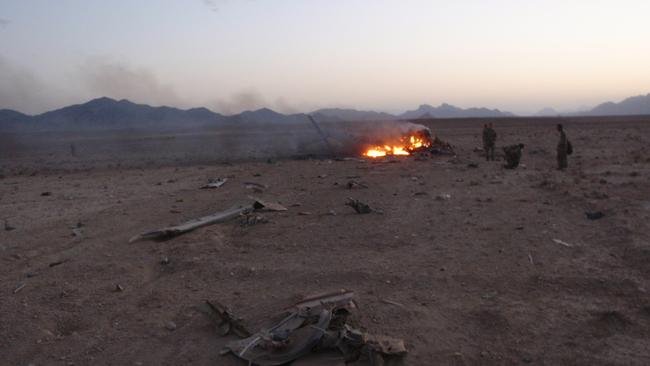
You can now listen to The Australian's articles. Give us your feedback.
Seatbelts were mandatory but we didn’t bother with them on some jobs – particularly on nights like this with a Black Hawk helicopter at capacity and zero room to move. As I was checking to make sure my pistol hadn’t been dislodged on my right side, I happened to feel the male end of the waistband portion of the seatbelt, so I pulled it up. Then I tried to find the female end. I felt around on my left side but couldn’t find it, and was about to give up when the tips of my fingers caught it between the seats. I pulled it up, rested my .50-calibre Barrett rifle between my knees and fastened the seatbelt. And, as it happened, I had nowhere to put my helmet if I took it off, so I left it on. Plus, the helmet provided a natural pillow on the cargo net behind my head.
These actions may have saved my life.
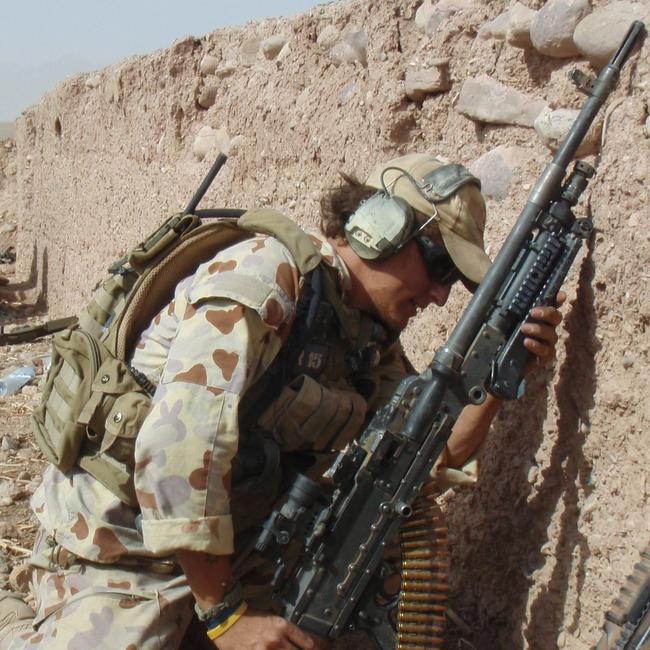
It was a moonless night, 0330 local time, in June 2010. I was part of a sniper team from Australia’s 2nd Commando Regiment, flying on this mission over the desert plains of Afghanistan’s Kandahar Province with the US Army’s 101st Airborne Division. The American crew chief, Brandon Silk, gave us the five-minute call to alert us that we were nearing our destination. Just a few moments later he asked the pilots on his headset, “How low are you going?”
Seconds later our Black Hawk crashed at more than 200km/h. The aircraft, flying just above the desert floor, hit an embankment and flipped over, rolling for more than 180m before coming to a stop and bursting into flames. The other two helicopters on our mission, believing we were under fire, banked hard and climbed, conducting an evasive manoeuvre. “I was adjusting my NVGs [night vision goggles] when I had a complete whiteout, then my chopper banked hard to the right,” said James Connor, who was in the second chopper behind us. “We had no idea what was happening, but I knew it was bad. Our bird then circled back around, coming in to land, when the loadies started screaming that we had a Fallen Angel.”
My last recollections before impact are of looking out the door and seeing the ground rush by. At first, I thought my NVGs were out of focus and I tried to adjust them. I remember looking at the horizon and wondering why we were so low when we were still five minutes from our destination.
Those of us who survived all vividly recall the impact, but nothing more. I remember sitting in my seat, then everything around me erupting into a violent spin before I lost consciousness. The next thing I remember is lying on my back with somebody’s hands holding the side of my face, and being in immense pain, the area around us lit up from what I thought was a bonfire but was in fact the wreckage of our Black Hawk in flames.
Oscar platoon, the quick-reaction force for our mission, was woken up not long after we crashed and told there was a Fallen Angel. Their orders were short and sharp: get to the crash site, secure the area and help with treatment. Oscar platoon lifted off from Tarin Kowt at first light, and as they approached the crash site they were shocked at what they saw. “We could see pieces of the chopper and equipment strewn across hundreds of metres,” explained Mali Gray, a member of Oscar platoon. “I have no idea how any of the boys survived.”
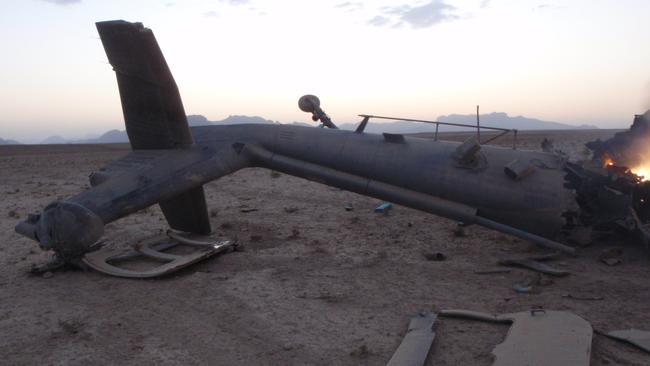
As Oscar platoon landed, they saw Viv Hunt and James Connor, completely covered in blood, with open medic kits, bandages and ampoules of drugs everywhere. All the wounded had already been evacuated to Kandahar, and so the platoon went about looking for guns, radio equipment and night-vision goggles, to ensure nothing could be left for the enemy.
Oscar platoon also searched for the body of Brandon Silk, which was eventually found in the wreckage once the fire had died down. And as they went about their work, they got news on the radio that Benjamin “Chucky” Chuck, filling the role of our second-in-charge, had also been pronounced dead. “The mood immediately went dark,” Mali recalled.
Back at Tarin Kowt, people were tasked to head to Kandahar Airfield, to the hospital where we had all been taken. Signaller Davis Pain, the only team member back at our base, Camp Russell, was fast asleep when he heard someone calling his name in the hallway. An officer from headquarters told him there had been a Fallen Angel, and to make sure our team’s hospital bags were packed. Davis was told to grab Ben Chuck’s toothbrush. “The fact that they asked for Chucky’s toothbrush told me he must have died and they needed his brush for DNA,” Davis said. “I grabbed the bags and they flew a bunch of us to Kandahar, and I finally got to see you guys. You were being looked after very well.”
Pain had been dropped off this particular mission to make room for the assault team. “Not being on that chopper is the best thing that happened to me and easily the hardest thing I have ever had to deal with,” Davis told me. “I was so riddled with guilt but grateful I wasn’t killed or banged up like you boys.”
Back at the crash site, Oscar platoon waited for the downed aircraft recovery team, and loaded the bodies – American crewman Brandon Silk, Australian commandos Tim Aplin, Scott Palmer and Benjamin Chuck, and the interpreter (whose name I won’t give for security reasons) – onto Black Hawks once the injured had been evacuated.
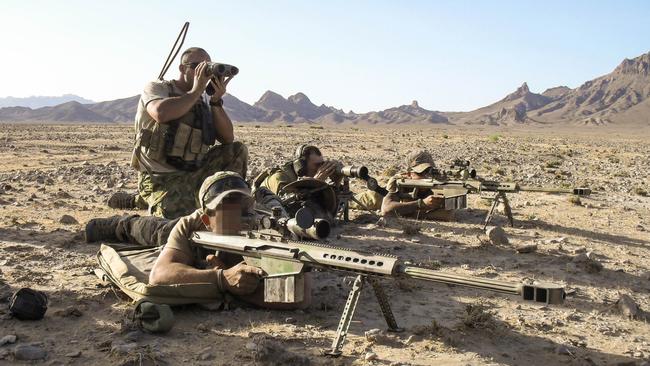
I have only vague recollections of all this, as I was in and out of consciousness. I recall being slid over on the floor of an empty Black Hawk as bodies piled in around me. One memory I have is someone telling me we needed to make room for Chucky, and I tried to move over but the pain in my legs and back wouldn’t allow me to move, and then someone shouted at me to lie still. I could feel Chucky’s body next to me, but I don’t remember seeing his face. I also have vague recollections of being in Kandahar with bunches of nurses and doctors fussing over me. Not long after I arrived, my lung collapsed and I lost consciousness.
In Tarin Kowt, the bodies of Chucky, Tim and Scott lay in the morgue, where a sentry was in place 24 hours a day. A candle was lit that was kept alight by the guards. Years later, I met a nurse who was working at the Role 2 hospital in Tarin Kowt, where the morgue was located at the time. “No matter what time of day, in the heat, or the rain, there was a commando there to keep watch, ensuring the candle never went out. I realised then how powerful the brotherhood in your unit must be,” she said.
Chucky, Tim and Scott were flown home on an RAAF C-130 Hercules, landing at RAAF Base Richmond in Sydney. Their bodies lay in ice caskets, with an Australian flag draped over each of them. Davis told me of the repatriation of the bodies, “The whole flight, I couldn’t sleep. I always had my hand on one of the caskets.”
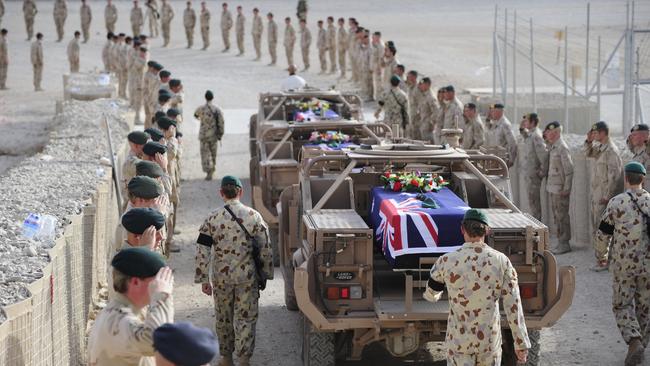
On 10 April 2010, two months before the Black Hawk crash, Scott Ryder had been involved in an incident at the Tarin Kowt firing range. He had fired an unsanctioned live round from a 40mm grenade launcher while preparing for aerial fire support training with US soldiers the next day. The round exploded just 15m in front of him, and a fellow soldier was injured. The matter was the subject of an investigation, which was still underway as Ryder was sent on combat missions.
After I was finally allowed to go home from hospital, I continued to get treatment as an outpatient. I was in good spirits and optimistic about my future – I was soon out of my wheelchair and on crutches – but in the back of my mind was a constant fear. The army had placed me on a medical classification that gave me ample time to recover, but there was a chance I would be medically discharged, and that kept me up at night. I told myself that if I got better as soon as possible, I could begin training to get back on the tools.
Then one morning, I ran into the RSM [Regimental Sergeant Major] at the hospital; he was on his way out from visiting our electronic warfare operator Gary Wilson and Sergeant Garry Robinson, who had been seriously injured in the crash. He dropped a bombshell on me. “Scott, just so you know, the range incident hasn’t been forgotten. It would be best if you got in contact with a legal officer soon. You’ll be court-martialled with grievous bodily harm,” he said, in a very matter-of-fact way.
I was so stunned I nearly dropped my crutches. Surely not. I’d expected to face some consequences for the incident, but I never thought it would be a charge as severe as this. Any motivation I had for rehab, or hopes of getting back to work, were shattered instantly. The comment totally crushed my spirit and I dropped into a pit of anxiety, panic and shock. For the first time in my career, I no longer felt like a soldier but an outsider – someone the system wanted to punish.
I jumped in a cab and called Sarah. She was furious. “They’re doing what? Are you serious? They can’t do that! If what you did was so bad, they should have sent you home. They can’t pretend it didn’t happen, then send you back out on jobs, then charge you because you survived!” I was still on crutches and undergoing intense rehabilitation, not knowing if I could ever walk or run again due to my spinal fusion. I was on two types of oxycodone and I couldn’t think clearly. The drugs exacerbated my anxiety about the charge.

Soon afterwards, I was officially delivered my charge notice by the director of military prosecutions. “Following the review of the brief of evidence, I have decided to prefer charges against [Private] Ryder,” the document read. The two charges were “Engaging in conduct outside the Jervis Bay Territory that is an offence causing grievous bodily harm” and “Unauthorised discharged of a weapon”. I contacted legal services and was given the name of David McLure SC, an Army Reserve lawyer working for a law firm in the Sydney CBD.
Lance, the soldier injured in the incident, called me when he heard about the charge. He bore me no ill will; he knew it was just an accident. Lance also had mixed emotions about the range incident himself. As the team’s second in charge, had he not been injured at the range he would have been in the chopper on the night we crashed.
I had numerous phone calls and meetings over the following months with David, who was equally surprised that the director of military prosecutions was pursuing such a severe charge, where I could face imprisonment if found guilty. As the trial date grew near, my anxiety would get to the point where I had trouble sleeping, so I started taking sleeping tablets and Valium. And to manage the pain in my body I was taking more opioid painkillers, to which my body was steadily building up a resistance. I saw an army psychologist, who commented on the drastic effect the impending trial was having on me. She could see that the director of military prosecutions was taking a dogmatic view in pursuing the grievous bodily harm charge. I didn’t expect, nor have I ever expected, special treatment for surviving the crash, but I also never expected to be charged with such a severe crime. The stress brought my deeply harboured survivor’s guilt to the surface, and I sometimes broke down under the weight of it. One night, at a barbecue with some friends, I got blind drunk. Mixing alcohol with my heavy medication was a bad idea, and Sarah found me inconsolable in the shower, claiming it should have been me who died, as the others didn’t hurt their mates at the range.
-
I spent weeks off my face; when I wasn’t, I would lash out at Sarah, my family or anyone I was with.
-
On the weekends over that Christmas break, I began partying even harder. When I was off my face I would openly talk about my experience and how I felt to my mates or whomever I was with on a two-day bender. I was on a slippery slope, mixing pain medications and booze. I lost weight, and my skin turned a strange yellow. Sarah bore the brunt of the worst of my behaviour. I would tell her I was going out for a few beers on a Friday, and I wouldn’t stumble back through the front door for days.
On a late February day in 2011, I hobbled into work to get my service uniform, still unable to place too much weight on my right ankle, which had been operated on weeks before, undergoing a complete reconstruction. The consensus at work was in line with Sarah’s – nobody could believe the scale of charges laid against me. A few days later, Sarah and I drove to Victoria Barracks in Paddington, Sydney, not saying a word the entire way, my feeling of trepidation growing with each passing minute. We were met by David, who explained the process, and stepped into the courtroom. Lance, who had now fully recovered, and a group of workmates and family were there in support.
Much of the first day was spent debating whether my name would be released to the media. David fought against it, arguing that I still had a protected identity; the prosecutor argued it was in the public interest to do so. The day was also noteworthy for another reason. Sarah had contacted investigative journalist Chris Masters, the only Australian journalist to be embedded with the Special Operations Task Group (SOTG). On arrival, Chris met resistance from the court staff but they couldn’t stop him, as this was classified as a public hearing.
On day two of the trial I gave my testimony. I felt dizzy as I walked up to the stand, and I could see the anxiety in Sarah’s face. David asked me about the day it had happened and my decision to fire the round. I explained the culture on range practices at Tarin Kowt, and the prosecutor grilled me on my decision to fire the round despite knowing it was illegal to do so. I constantly tried to gauge where the verdict was heading, but a lot of legal talk and continual references to documents I had never seen made it difficult.
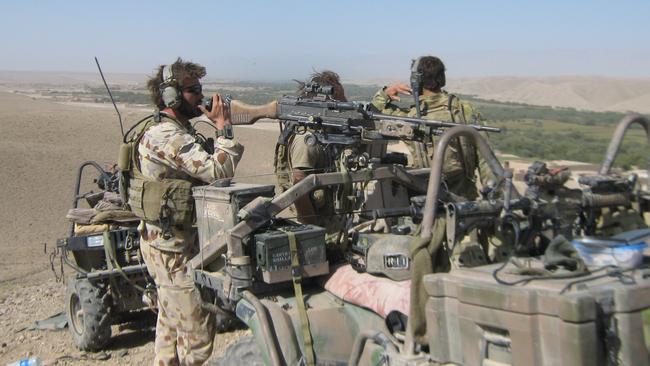
Then David asked me the question I’d been dreading: “Can you tell me what the worst experience has been for you in the past few months?” Hesitating, I looked at David, and he gave me a slow nod as if to say, You know what I’m asking. Go on. I could barely get the words out. “When I woke up in Germany, I wasn’t sure where I was. The nurses told me I’d been in a helicopter crash, but I didn’t believe them,” I said. I paused; my chin started to tremble. “The nurses got the details wrong; I thought I was the only survivor. I wanted to die,” I sobbed, burying my face in my hands, not wanting the court to see my crying. The judge was also in tears, as was Sarah and half of the gallery.
It was decided to drop the grievous bodily harm charge. When David told me I was relieved, but he said not to get too comfortable; we still had the UD [unauthorised discharge] charge to hear. We were ushered outside to await the verdict; within an hour I was found guilty with no conviction, and the trial ended. The prosecuting lawyer came up and shook my hand. “Congrats, mate, a good result,” he said.
I hugged Sarah. It was finally over. A giant weight had been lifted off my shoulders. Within a few days Chris Masters published a special report in The Daily Telegraph headlined “Australian war hero court trauma”. The article referred to me as “Private S”; my lawyer, David, was quoted as saying the decision to prosecute me was “callous and demonstrating a weird lack of empathy”.
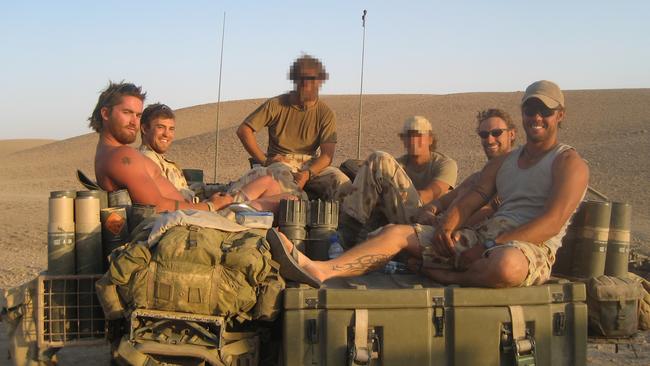
Other media picked up the story, and the public seemed outraged that I had been charged, given that I had been put in a life-threatening situation and was only charged after surviving the crash. I learned a valuable lesson from the experience. If I stayed in the army, it would be for my reasons. The experience taught me that I could never expect loyalty from the organisation, and that no matter who you were, you were ultimately just a number that could be easily replaced.
Ryder fought to be medically upgraded and it was while on his honeymoon that he got the call – he was to be a commando again. In July 2013 he was redeployed to Tarin Kowt, Afghanistan, in an assault team in Uniform platoon.
My friends and family thought I was mad to return. My best mate growing up and the best man at my wedding, Leithen, summed up most people’s sentiments on me going back over. “Mate, you’ve done enough. Just take a pension and find a cruisy job. Why would you risk your life again?” It’s hard to explain why I wanted to go back over. I felt like I had unfinished business; I never got closure from my last deployment. Strangely, I felt robbed of the usual post-deployment routine of flying into the UAE, handing all my gear back, catching a chartered flight to Sydney and walking out of the arrivals gate for a few weeks of well-deserved leave.
I also felt like I owed it to the boys who were killed in the crash not to pull the pin and get out just because I had been injured. I felt as if getting out of the army and sitting at home with a pension was the weak way out. And there was a lot more I wanted to achieve before I left, too. I knew, however, having the injuries I had at just 24, that a lifelong career in the army was out of the question. I knew it would come to an end one day – just not now. After waking up in a hospital in Germany then spending months in the hospital completing numerous surgeries, being court-martialled and spending two years in rehab, the moment I never thought I would get to experience again was almost upon me.
Almost three years after losing Chucky, Scott and Tim in the desert plains of Kandahar, I touched down at the airstrip at Tarin Kowt and walked off the ramp into a brilliant summer morning. As I walked through the gates of Camp Russell, I was overcome with emotion. All the tears, pain and uncertainty were behind me now. I’d never thought I would set foot in Tarin Kowt again, and I was so grateful to be given the opportunity – I needed this more than people knew.
Forged in Fire: An Australian Commando’s Story of Life and Death on the Frontline is out now through Allen & Unwin ($36.99)

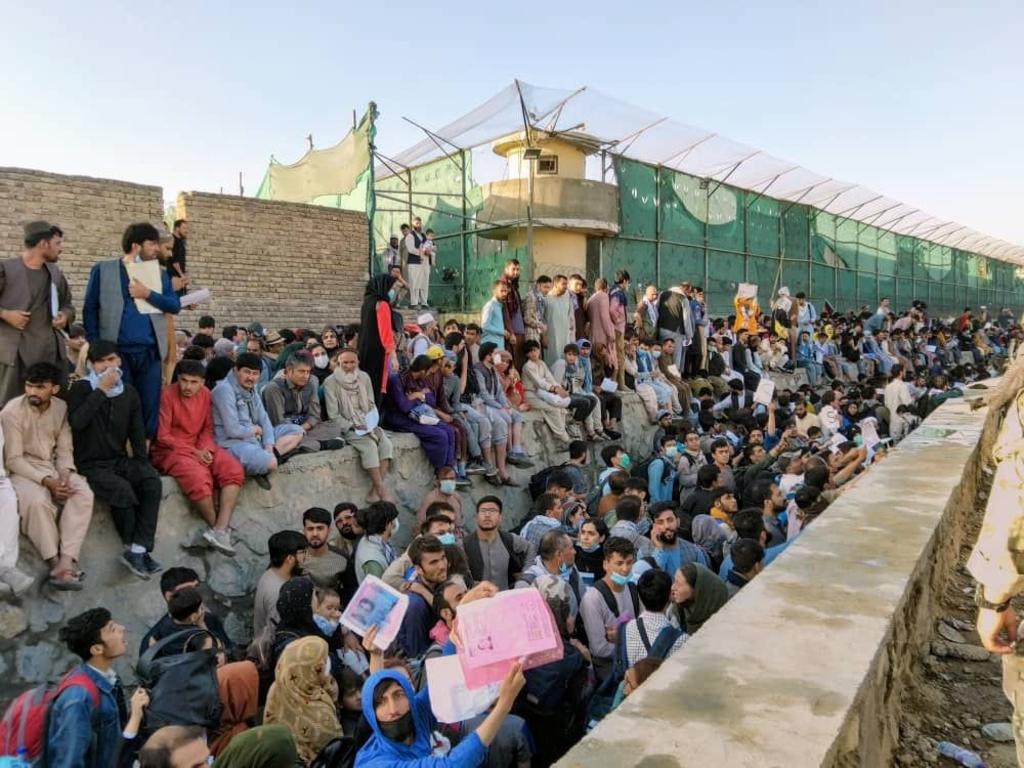
To join the conversation, please log in. Don't have an account? Register
Join the conversation, you are commenting as Logout